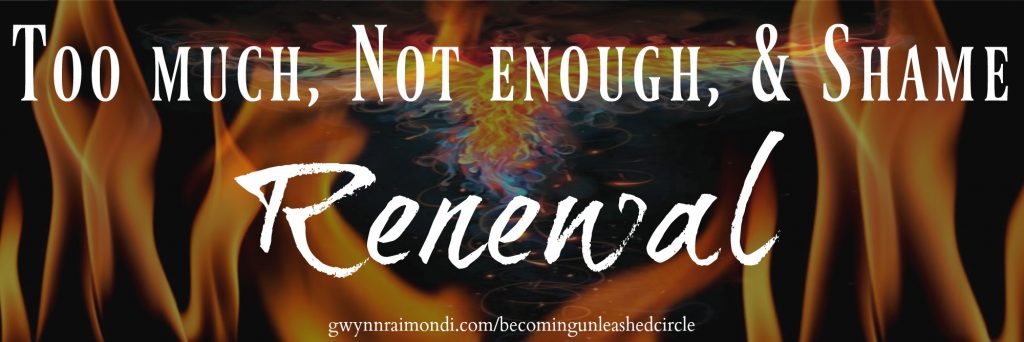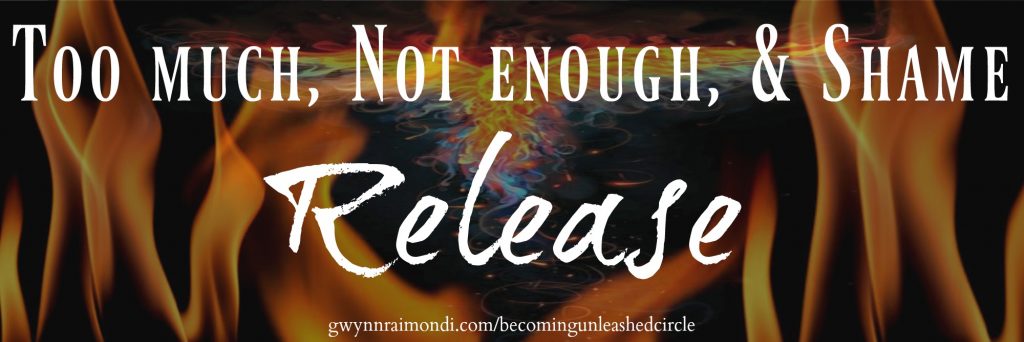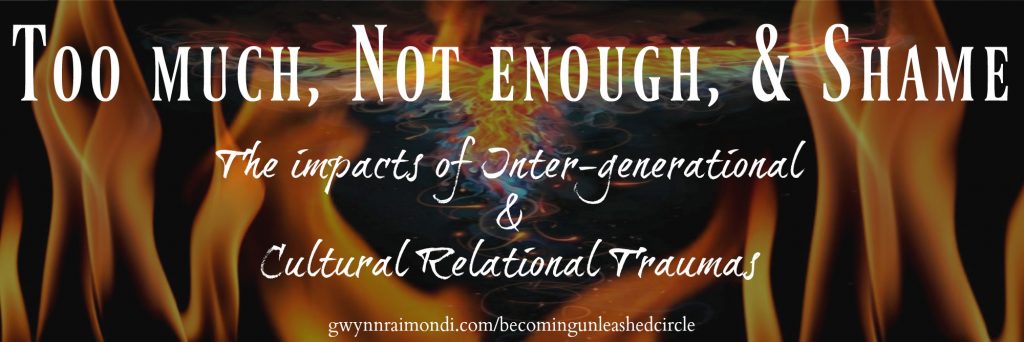
Metamorphosis is the most profound of all acts. ~Catherynne M. Valente, In the Night Garden
And I feel like the Queen of Water. I feel like water that transforms from a flowing river to a tranquil lake to a powerful waterfall to a freshwater spring to a meandering creek to a salty sea to raindrops gentle on your face to hard, stinging hail to frost on a mountaintop, and back to a river again. ~María Virginia Farinango, The Queen of Water
I take pleasure in my transformations. I look quiet and consistent, but few know how many women there are in me. ~Anaïs Nin
According to Merriam-Webster to renew has the following definitions:
- to restore to existence : revive
- to make extensive changes in : rebuild
- to begin again : resume
- replace, replenish
- to become new or as new
- to begin again : resume
If we look in the thesaurus, some synonyms for renewal are:
- awaken
- transform
- metamorphosis
- revolution
- shift
- radical change
When I think of renewal I think of the story of Inanna, the Sumerian Goddess of Heaven and Earth. The very condensed version of the story is that Inanna travels to the Underworld to be with her grieving sister, Ereshkigal. Inanna had to travel through seven gates on her way down into the Underworld, leaving a piece of clothing behind at each gate to enter into the Underworld completely naked. The descent into the Underworld and removal of layers of clothing represents Release. Her time in the Underworld represents Renewal.
Ereshkigal was not happy to see her sister and had her hung on a hook to die. Inanna’s handmaiden, Ninshubar came after three days and helped Inanna back up through the gates, reclaiming what is rightfully hers at each gate, and back to the land of living.
This time in the Underworld, hanging on a hook dead, was the time of Inanna’s renewal, her own transformation, her incubation that lead to her rebirth.
It was her time in The Goo.
If you are new to me and my work, The Goo is the time in the cocoon when the caterpillar has fully disintegrated and decomposed yet not yet formed into a butterfly or moth. My feeling is that this is a very uncomfortable time. The Goo is no longer what it was (a caterpillar) and also isn’t yet what it is to become (a butterfly or moth) and honestly I believe The Goo has no idea what the future holds for it, and so it is a time of unknown, a time of needing to trust in the future without being able to see it. It is the time of great change, great shifting, profound transformation.
While The Goo is uncomfortable, likely terrifying, it is a time of quiet restructuring. To the outside world when we are in our own versions of The Goo, it may look like we are doing a whole lot of nothing or that we are resting. This is because The Goo is not a time doing, it is a time of being. It is a time of outer stillness in many ways. Not stagnant, for there is much movement internally, but stillness to allow for the internal restructuring and integration to take place.
The Goo is when we learn what it is to tolerate discomfort, to accept the unknown, to be able to be in the in-between spaces of life without trying to force things in one direction or another. It is a time of acceptance. Of surrender. Of allowing what needs to happen to happen.
It is not an easy time. Like the stage of release, but to a greater degree, it is a time of unlearning, unraveling. A time of allowing old neuropathways to atrophy and new ones to sprout and take root. It may be a physically painful time, it is always an emotionally painful time, and there may even be moments of psychological pain as we let go of old coping mechanisms that no longer serve us, but in fact are now causing us harm.
The Goo may feel unbearable at times, but it does not last forever. Even the most profound of transformations do come to an end (to allow us to move into a new time of transformation). The discomfort doesn’t last forever, pain does pass. The person we become on the other side, I believe, is worth all the work, and discomfort.
I talk more about these ideas in the 8-minute video below.
This essay is the third of a four part series I have written exploring our narratives of too much, not enough, and the shame we carry and how we can release them and reclaim our own strength, power, and daring. I hope you find it helpful and informative.
This essay series is also to introduce the themes we will be exploring in the fall online women’s circle Becoming Unleashed. We begin October 1 and space is limited to six women. You can learn more here.
In case you missed the other essays and videos in this series, you can find them at the links below:
The Impacts of Inter-generational & Cultural Relational Traumas
Releasing our stories of too much, not enough, & shame
The Goo: A time of renewal, restructuring, re-evolving (this essay)

 You cannot let go of anything if you cannot notice you are holding it. ~Neale Donald Walsch
You cannot let go of anything if you cannot notice you are holding it. ~Neale Donald Walsch